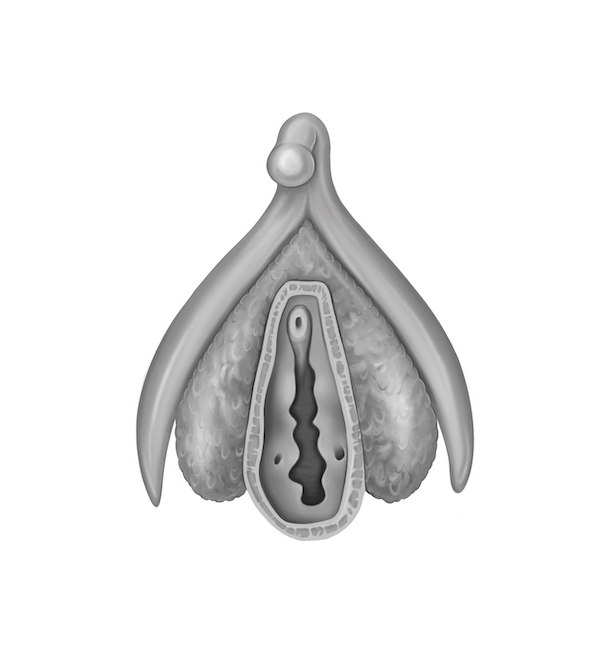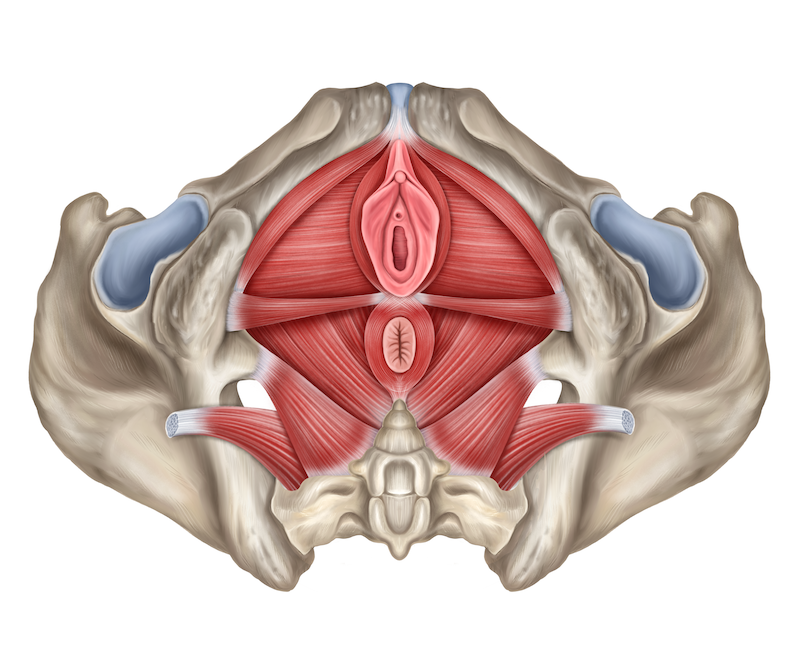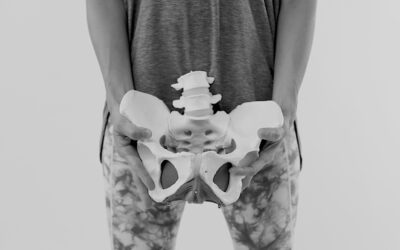Orgasms can be the very welcome grand finale of an intimate experience. They’re your body’s way of saying, “Hey, great job down there!” But if you’re someone who feels pain instead of pleasure at the peak moment, you’re not imagining it — and you’re not alone. A condition in which you experience a painful orgasm, also called dysorgasmia, is more common than people realize.
What actually is an orgasm?
Before we tackle the complexities of painful orgasms, it’s important to understand what an orgasm entails. Although similar in their pelvic floor contractions, they are experienced differently from person to person and from moment to moment.
An orgasm is a moment of intense pleasure that lends to a brief feeling of both physical and mental euphoria.1 The most common symptoms are involuntary contractions in the pelvic floor muscles — particularly around the vagina and uterus (in female bodies), prostate (in male bodies) and anal opening.
Different kinds of orgasms (and why that matters)
Orgasms aren’t one-size-fits-all. According to research, women can experience orgasms triggered by a variety of both genital and non-genital touch — and the type of stimulation may affect the physical sensations and even emotional impact of an orgasm.2
Some main types of orgasms include:2
- Clitoral orgasms: This is the most commonly reported, “easiest” to reach, type of orgasm. Your clitoris is jam-packed with nerve endings and external or internal clitoral stimulation can lead to rapid, intense pleasure.
- Vaginal orgasms: These happen from internal stimulation, especially the front vaginal wall — often linked to the “G-spot”. Vaginal orgasms often feel deeper and may trigger more full-body sensations.
- Cervical orgasms: Triggered by deep penetration or direct stimulation of your cervix (the opening to the uterus), cervical orgasms may feel deeper or more emotional. Not everyone finds cervical stimulation comfortable, but for those who do, the sensation is often said to be the most pleasurable.
- Blended orgasms: This happens when multiple areas are stimulated at once — like your clitoris and vagina. Often, people report combined sensations for a more intense or longer-lasting orgasm.
- Non-genital orgasms: Yes, really! Some people report orgasms from stimulating non-genital areas like the nipples or ears. Non-genital orgasms may even be achieved while sleeping, like during a dream, or while exercising.3
Why does this matter? Because the type of stimulation involved can activate different muscles and nerves — and that can affect whether you experience a painful orgasm. For example, deeper orgasms involving your cervix or pelvic floor may trigger more discomfort if you have tight pelvic floor muscles, a condition like endometriosis, or a history of a gynecological surgery.4 Understanding your own orgasmic pain patterns can help you identify triggers and get the right kind of support if you’re experiencing pain.
Causes of painful orgasm
Experiencing pain during or after orgasm can be attributed to various things. Here are some of the more common culprits.
Pelvic floor muscle dysfunction
The pelvic floor muscles play a huge role in orgasm. These muscles contract rapidly to help create pleasurable sensations. However, if these muscles are overly tight or in spasm, then these contractions can be painful. Too tight pelvic floor muscles is a type of pelvic floor dysfunction, not only can they lead to pelvic floor pain during sex, but they can lead to painful orgasm as well.
Endometriosis
Endometriosis is a condition where tissue that is similar to the lining of the uterus (the endometrium) grows outside the uterus. This misplaced tissue can cause pain and inflammation throughout your body, which can be especially bad when you’re on your period and during sex.5 Some research suggests that 14% of people with endometriosis also have dysorgasmia, which is linked to their pelvic floor pain and chronic centralized pain.6
Pelvic inflammatory disease (PID)
PID is an infection of the female reproductive organs, often caused by sexually transmitted infections (STIs). This condition can lead to inflammation and scarring, causing pelvic pain and painful sex that may get worse during orgasm. Think of it as trying to dance with a sprained ankle — the movement aggravates the injury.
Ovarian cysts
Ovarian cysts are fluid-filled sacs that develop on your ovaries.7 While many are harmless, some can cause pain, especially if they rupture. If you experience sharp pain on one side during orgasm, an ovarian cyst might be the culprit.
Uterine fibroids
These noncancerous growths in the uterus can lead to discomfort during sex and orgasm. Depending on their size and location, fibroids can press against surrounding tissues, making muscle contractions during orgasm painful. It’s akin to having an uninvited guest taking up too much space on the dance floor.
Gynecological surgery
Surgeries like hysterectomy, fallopian tube removal (salpingectomy), or endometriosis treatment can lead to painful orgasms due to nerve changes, scar tissue (adhesions), or pelvic floor dysfunction. Nerves may become overly sensitive, and tight pelvic muscles can add to the discomfort — especially without proper post-op rehab like pelvic floor therapy.
Sex guilt
Painful orgasms aren’t just physical — they can be deeply emotional, too. Feelings of guilt, shame, or anxiety — especially if tied to cultural, religious, or societal pressures around sex — can actually contribute to pelvic floor tension and amplify pain.8 With sex guilt you may even unconsciously brace or tighten your muscles during sex due to internalized beliefs or past trauma, leading to or worsening orgasmic pain.9
How to find relief from pain when orgasming
Experiencing painful orgasms isn’t something you have to endure silently. There are several approaches to alleviate the discomfort:
Pelvic floor physical therapy
If you have painful orgasms, work on your pelvic floor to address issues like muscle tightness, trigger points, and spasms. You can learn to unwind chronic pain which can improve your sexual health and physical emotional well-being with treatment that includes manual therapy, biofeedback, and tailored exercises.
Medical interventions
Depending on the underlying cause, medical treatments may be necessary. Common medications include antibiotics to treat infections like PID or pain relievers for more chronic conditions. In cases of significant uterine fibroids, ovarian cysts, or endometriosis, surgical intervention might be recommended to remove problematic tissues.
If you have orgasmic pain, let your healthcare provider know to help you rule out any medical conditions that could be causing your pain and determine the most appropriate treatment plan.
Emotional support for painful orgasm
Talking to a licensed sex therapist or a mental health professional who specializes in sexual dysfunction can help untangle the emotional layers of dysorgasmia. Therapy can provide a safe space to explore how past experiences or beliefs may be affecting your body’s responses.
And don’t underestimate the power of open communication. Sharing what you’re going through with a trusted partner can reduce anxiety, build intimacy, and help you both explore new ways to experience pleasure without pain (or pressure). This can be especially important for sexually active couples navigating discomfort together.
You are not broken — your body is talking
A painful orgasm doesn’t mean you’re broken. Your body is trying to tell you something. Painful orgasms can be fixed, managed, or dramatically improved. In the V-Hive, you’ll get instant access to pelvic health education, exercises and stretches designed to relieve painful orgasms and provide support for your pelvic floor and your sex life.
References
- Meston, C.M., et. al. (2004). Women’s orgasm. Annu Rev Sex Res.
- Weitkamp K., et. al. (2023). Women’s Experiences of Different Types of Orgasms-A Call for Pleasure Literacy? Int J Sex Health.
- Cronkleton, E. (2023). Coregasm: Why it Happens, how to have one, and more. Healthline.
- Giovannetti O,. et. al. (2023). The contribution of the cervix to sexual response: an online survey study. Int The Journal of Sexual Medicine..
- World Health Organization. (2023). Endometriosis.
- Ding, A., et. al., (2024). Pain with orgasm in endometriosis: potential etiologic factors and clinical correlates. The Journal of Sexual Medicine.
- Beerten S.G., et. al., (2024). Dysorgasmia in women: Case report and preliminary assessment guide. Women’s Health.
- Ley, D.J., (2017). Overcoming religious sexual shame. Psychology Today.
- Azim, K.A., et. al., (2021). Exploring relationships between genito-pelvic pain/penetration disorder, sex guilt, and religiosity among college women in the U.S. The Journal of Sexual Medicine.






